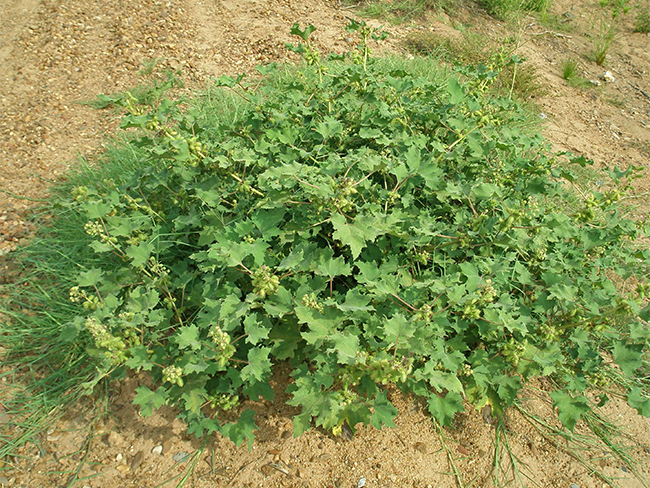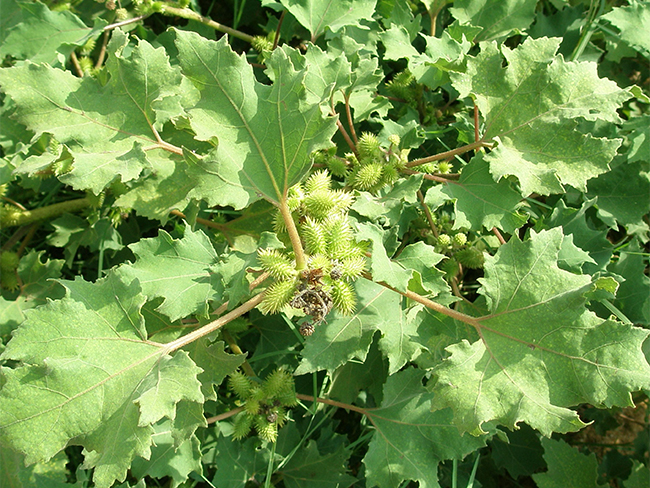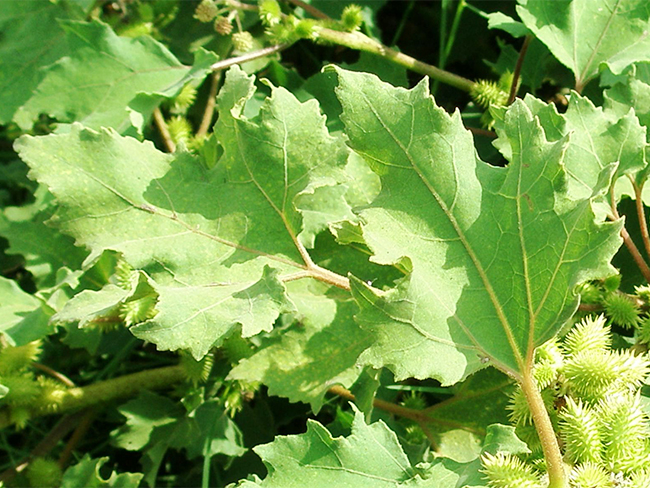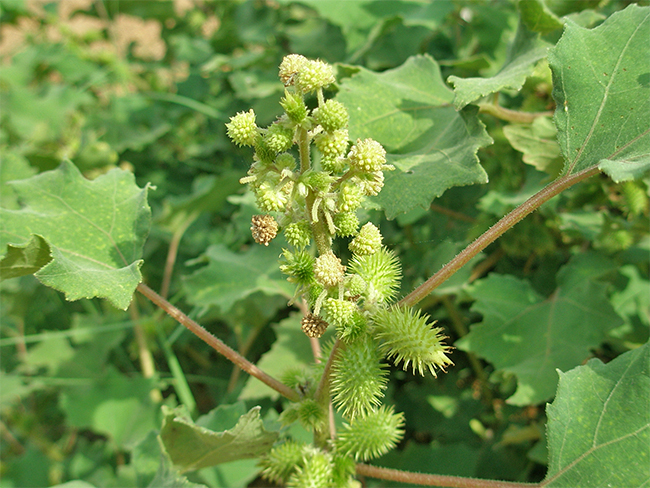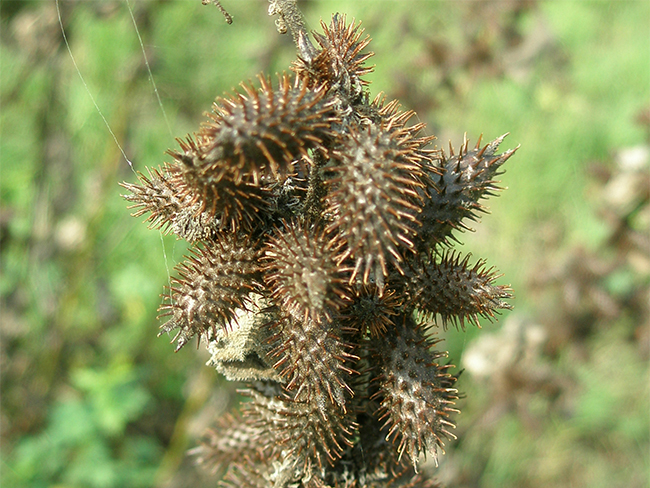Noogoora burr
Scientific name: Xanthium strumarium or Xanthium occidentale
Declaration status: Class B
Noogoora burr is native to the Americas.
It was accidentally introduced to Queensland late last century in imported cotton seed.
Noogoora burr has become a problem in Queensland, parts of New South Wales, South Australia, Western Australia and in the Northern Territory (NT).
In the NT, it is now established on many major river systems, including the Calvert, Daly, Mainoru, MacArthur, Victoria and West Baines.
Noogoora burr is also established on properties in the Barkly, Gulf, Katherine, Victoria River and Darwin districts.
For more information get the noogoora burr identification fact sheet PDF (1.3 MB).
Impact
Noogoora burr can rapidly invade riparian and seasonally wet areas, as well as grazing and cropping land.
Noogoora burr can have all of the following impacts:
- significantly impact production
- displace valuable grazing species
- highly toxic if ingested by cattle, sheep and horses
- symptoms of stock poisoning include intense pain, salivation, muscular spasms, tremors, vomiting and scouring
- death can occur within two hours or up to two days after ingestion
- burrs can also become problematic as they become entangled fur and hair
- burrs can damage wool, reduce its value and make shearing more difficult
- costs for inspection and removal from travelling livestock can dramatically increase in affected areas
- once established, it is difficult to eradicate and spreads rapidly.
Identification
You should use this as a guide. There may be other plants or weeds that look similar.
- branched annual plant up to 2m tall
- fleshy stems, green to purplish in colour with rough texture
- dark green, alternate leaves 10 to 15cm in diameter
- three to five irregular toothed lobes with rough texture
- small and inconspicuous pale green flowers that grow in leaf axils and produce clusters of burrs on short stalks
- burrs are 1.5 to 2cm long and 0.5 to 0.8cm wide green and oval shaped, drying to dark brown, covered in small woody spines
- two seeds are contained inside the burr in separate sections
If you are unsure, contact the Weed Management Branch.
Similar looking plants
The following plant species look similar to noogoora burr:
Bathurst burr (Xanthium spinosum) is also a declared Class B and Class C weed which occurs south of Tennant Creek. It is smaller, more branched, and has narrower, tapering leaves.
There are other burrs that are similar, but none are present in the NT.
Control
Chemical control
The best time to treat noogoora burr is from December to April. Below is a list of treatment methods that can be used.
| Chemical and concentration | Rate | Situation, method and notes |
|---|---|---|
|
2, 4-D amine 625g/L Various trade names | 180ml / 100L |
Seedling or adult (individuals or infestation): Foliar spray - apply when actively growing |
|
Fluroxypyr 333g/L Various trade names |
45ml / 100L or 450ml / ha (boom) |
Seedling (individuals or infestation): Foliar spray - apply when actively growing |
|
Glyphosate 360g/L Various trade names and formulations | 15ml / 1L |
Seedling or adult (individuals or infestation): Foliar spray - apply when actively growing |
|
MCPA 340g/L and Dicamba 80g/L Various trade names |
190 to 270ml / 100L or 2.8 to 4L / ha (boom) |
Seedling or adult (individuals or infestation): Foliar spray - use higher rates on larger plants |
Non-chemical control
Hand pulling and grubbing
Weeds, including their roots, are physically pulled out of the ground by hand or using hand tools. This is an effective method of control for individual weeds and recent outbreaks that haven't released seeds yet, but it requires a lot of labour.
Slashing
A brush-cutter, slasher or mower are used to cut weeds off above the ground level. This can be effective in suppressing flower and seed development.
Fire
Fire as a management technique is most effective when it is used together with other methods. It is useful for mass seedling control if there is a sufficient fuel load.
Biocontrol
Noogoora burr was one of the first weeds in Australia to be considered for biological control, and two agents have been released against it in the NT.
See the How to manage weeds page for more information about the noogoora burr biocontrol program.
Spread
Noogoora burr is spread by the seeds in its characteristic burrs. They adhere to animal hair and are spread by cattle. Preventing this spread can be costly and labour intensive.
Spread prevention
You can prevent the spread of noogoora burr by doing all of the following:
- map infestations to help develop a management plan
- control minor infestations, isolated outbreaks or seedlings first
- designate wash down areas and actively work to prevent contamination of clean areas
- ensure all stock moving into clean areas are quarantined and free of burrs
- monitor areas that you have treated and watch for re-infestations.
Give feedback about this page.
Share this page:
URL copied!
